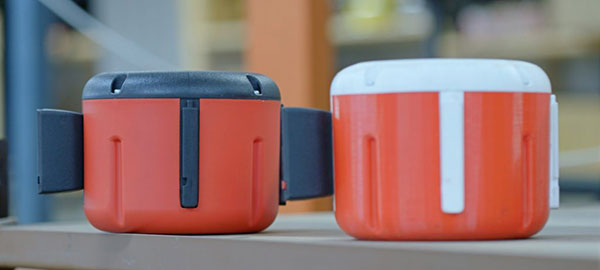TensaBelt: Iteration Advances Thanks to 3D Printing
This technology has enabled them to create many iterations of each part at a low cost, ensuring the ability to achieve the desired result when developing its queue management systems.

Image courtesy of BN3D/TensaBelt.
Latest News
March 11, 2020
TensaBelt has transformed its workflow since incorporating 3D printing for functional validation on its product design process, the company says. This technology has enabled them to create many iterations of each part at a low cost, ensuring the ability to achieve the desired result when developing its queue management systems.
If you have recently been to a museum, a concert or a movie premiere in Europe, chances are you’ve stood next to one of TensaBelt’s products. From Barcelona to the world, Tensabelt designs, produces and distributes devices for queue management systems such as barriers, cones and roll-up belts.
Currently distributing over 10,000 injected plastic units across all of southern Europe, the production team says it recognized that it needed a quick and efficient solution for functional validation that would allow the company to achieve better results in less time, reducing their products’ time to market while maintaining quality results.
Prior to integrating 3D printing, the product design team at TensaBelt didn’t count on many functional prototypes of their designs before new pieces would be fabricated.
“Before having our BCN3D Sigmax, we would mostly work in a digital design,” explains the company’s global production manager, Clara Bazán. Due to the high costs of making prototypes, and the waits of at least a week per part, most of their designs would not leave the digital environment until it was time for production.
“This meant that we faced a high risk of making mistakes,” says Bazán, “because something that works on the digital world doesn’t always work in reality.”
TensaBelt decided to invest in in-house 3D printing. “Additive manufacturing gives us a clear product evolution, as we are able to touch and feel each part while testing,” says Bazán, who adds that now they can “have a prototype in our hands in a matter of hours, instead of waiting on an external supplier for days.”
By fabricating the different versions of each piece through 3D printing, the TensaBelt team can validate the volume, shape, joints, assembly and functionality of all mechanisms of their products. The possibility of fast iteration ensures plenty of chances to redevelop each model as necessary, avoiding possible design mistakes that would be more expensive to solve in the industrialization phase.
By incorporating 3D printing into the process, TensaBelt has enabled an iterative design operation that ensures that each of its final products will always be its best possible version, the company says.
Sources: Press materials received from the company and additional information gleaned from the company’s website.
Subscribe to our FREE magazine, FREE email newsletters or both!
Latest News
About the Author
DE’s editors contribute news and new product announcements to Digital Engineering.
Press releases may be sent to them via [email protected].






